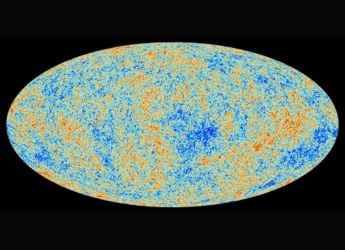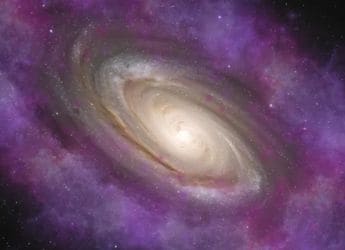- Home
- Science
- Science News
- NASA’s Hubble Telescope Captures Stunning Image of 'Colourful Star Forming Region'
NASA’s Hubble Telescope Captures Stunning Image of 'Colourful Star-Forming Region'
The Hubble telescope has been observing deep space for 30 years.

Photo Credit: Instagram/ NASA
NASA shared the colourful capture on Instagram
NASA has shared a stunningly colourful image that shows a region in outer space where newborn stars are taking shape. It is splattered with hues of red and yellow, with twinkling stars dotting the region like diamonds and sparkling as the sun's rays pass through them. The American space agency said that this colourful star-forming region looks a bit like a seasonal cosmic brew. The region gets its warm-hued colour because of gas and dust particles sparkling brightly in “this stellar nursery,” NASA said. The image has been captured by NASA's Hubble telescope.
The Hubble telescope has been observing deep space far more closely than any other apparatus for the past 30 years. Launched in 1990 as a collaboration between NASA and ESA, the Hubble telescope has made more than 1.3 million observations so far.
“PUMPKIN SPACE > PUMPKIN SPICE,” NASA captioned the post, referring to the popular Starbucks brew.
NASA added that this region is similar to the Orion Nebula, one of the most familiar star-forming regions, but more distant from Earth. It is estimated to be about 13,000 light-years from Earth.
The Orion Nebula, the nearest star-forming region to Earth, is 1,500 light-years away. It can be seen with the naked eye.
A couple of days ago, NASA shared an image of two peculiar galaxies locked in a cosmic dance, at a distance of about 220 million light-years from Earth. The image was captured by the Hubble telescope. In the post, NASA said that the gravitational pull between the two galaxies will eventually result in the smaller galaxy either being tossed out into space or being consumed by the larger one.
On another occasion, the Hubble telescope had found six early galaxies, massive in size, that were “dead” when the universe was about three billion years old. These galaxies had run out of cold hydrogen, the fuel needed for star formation. NASA said that as these galaxies had no fuel to form stars, they were running “empty.”
Catch the latest from the Consumer Electronics Show on Gadgets 360, at our CES 2026 hub.
Related Stories
- Samsung Galaxy Unpacked 2025
- ChatGPT
- Redmi Note 14 Pro+
- iPhone 16
- Apple Vision Pro
- Oneplus 12
- OnePlus Nord CE 3 Lite 5G
- iPhone 13
- Xiaomi 14 Pro
- Oppo Find N3
- Tecno Spark Go (2023)
- Realme V30
- Best Phones Under 25000
- Samsung Galaxy S24 Series
- Cryptocurrency
- iQoo 12
- Samsung Galaxy S24 Ultra
- Giottus
- Samsung Galaxy Z Flip 5
- Apple 'Scary Fast'
- Housefull 5
- GoPro Hero 12 Black Review
- Invincible Season 2
- JioGlass
- HD Ready TV
- Laptop Under 50000
- Smartwatch Under 10000
- Latest Mobile Phones
- Compare Phones
- OnePlus Turbo 6V
- OnePlus Turbo 6
- Itel Zeno 20 Max
- OPPO Reno 15 Pro Mini 5G
- Poco M8 Pro 5G
- Motorola Signature
- Vivo Y50e 5G
- Vivo Y50s 5G
- Lenovo Yoga Slim 7x (2025)
- Lenovo Yoga Slim 7a
- Realme Pad 3
- OPPO Pad Air 5
- Xiaomi Watch 5
- Huawei Watch 10th Anniversary Edition
- Acerpure Nitro Z Series 100-inch QLED TV
- Samsung 43 Inch LED Ultra HD (4K) Smart TV (UA43UE81AFULXL)
- Asus ROG Ally
- Nintendo Switch Lite
- Haier 1.6 Ton 5 Star Inverter Split AC (HSU19G-MZAID5BN-INV)
- Haier 1.6 Ton 5 Star Inverter Split AC (HSU19G-MZAIM5BN-INV)

















